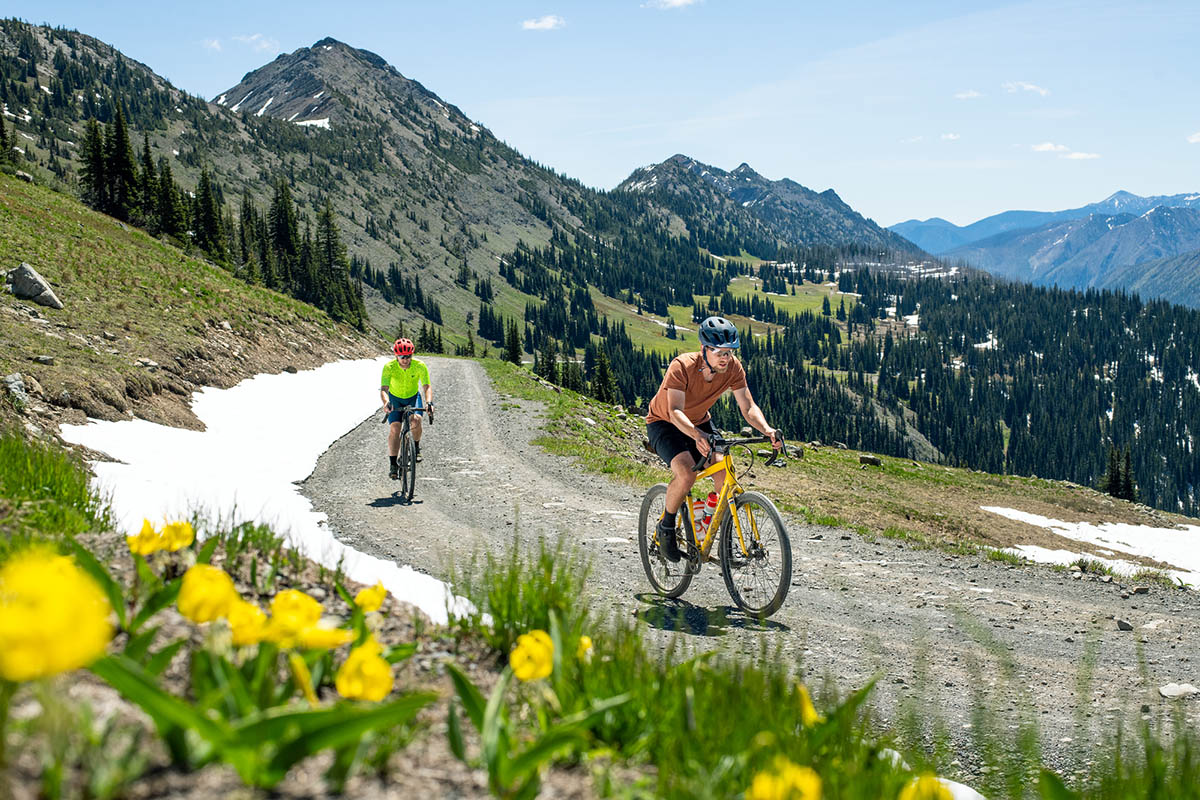
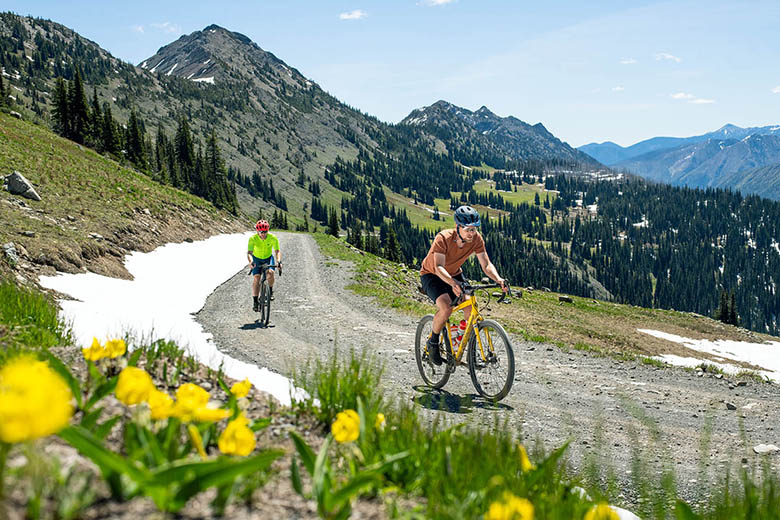
Switchback Travel (Jason Hummel)
Gravel bikes—also known as adventure or all-road bikes—are built to handle terrain ranging from forest service roads to pavement, dirt, and even mellow singletrack. In essence, they are more capable than road bikes yet more efficient than mountain bikes, transitioning nicely from daily commutes to weekend adventures. While the definition of these dirt-focused models still is up for debate, they share a few key design features including a more upright seating position for added comfort over long distances, high-volume tires to help smooth out rough roads, and multiple mounting points for extra water and gear. From leading budget options to range-topping carbon rigs, below are the top gravel grinders of 2021. For more background information, see our gravel bike comparison table and buying advice below the picks.
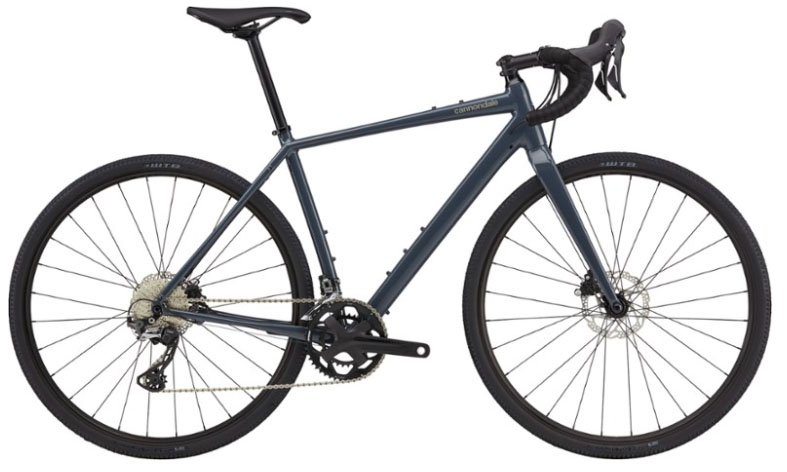 Frame: Aluminum
Frame: Aluminum
Gears: 2 x 11
Tires: 700c x 38mm
Brakes: Hydraulic disc
What we like: Quality components and impressive versatility at a good price.
What we don’t: A bit heavy for weight-conscious riders.
We’ll start by saying that we didn’t anticipate our top gravel bike pick being an aluminum-frame rig, but the Cannondale Topstone 1’s versatility, smart build, and competitive price tag won us over. In terms of design, the Topstone features the kind of premium aluminum frame that the brand is known for, a gravel-specific Shimano GRX drivetrain complete with hydraulic disc brakes, and appropriately wide wheels for soaking up bumps. Its balanced geometry also hits a nice sweet spot of responsiveness for climbs and road riding with a relaxed and confidence-inspiring feel on the descents. The cherry on top: the mid-range “1” manages to undercut much of the competition in price at a reasonable $2,150. From weekend gravel rides to daily commutes, the Cannondale Topstone is an excellent option.
The aluminum frame doesn't come without compromises, however. At about 22.5 pounds, the Topstone certainly isn't the lightest gravel bike on the market and likely won't be the first choice of speed-focused riders (if this sounds like you, the extra $450 for the carbon Giant Revolt Advanced 2 below might be worth it). And we’d like to see higher-quality rubber that’s tubeless-ready (they recently switched the tires to Vittoria from WTB’s Riddler, which leads us to believe it was a supply issue). However, these are relatively small nitpicks about an otherwise impressive all-around gravel bike. It’s worth noting that Cannondale also offers the Topstone Carbon with a lighter frame and their minimalist Kingpin rear suspension that helps cushion harsh impacts.
See the Cannondale Topstone 1
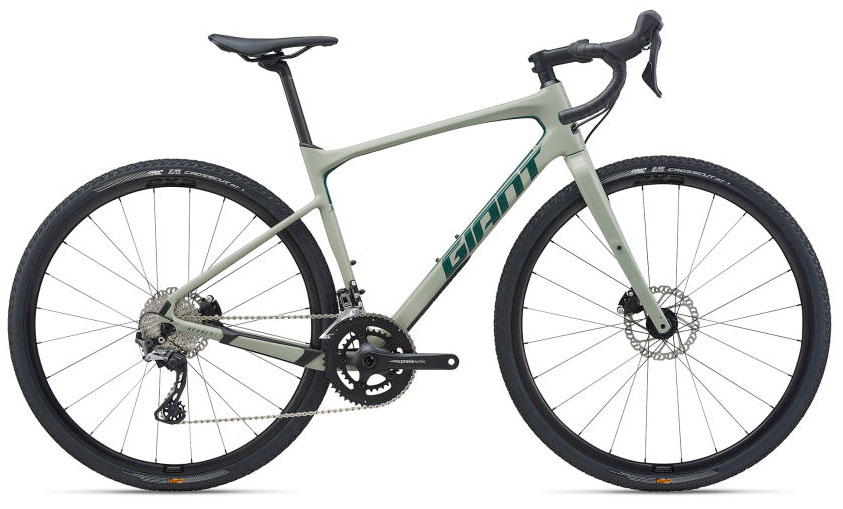 Frame: Carbon
Frame: Carbon
Gears: 2 x 11
Tires: 700c x 38mm
Brakes: Hydraulic disc
What we like: Lightweight carbon frame and Shimano GRX drivetrain at a reasonable price point.
What we don’t: For some, the carbon frame may not be worth the price increase over the Topstone above.
Giant has built a reputation around producing high-quality bikes at affordable prices, and their Revolt Advanced 2 is a shining example. For $2,600, you get a light and compliant carbon frame, a smooth-shifting Shimano GRX 22-speed drivetrain, hydraulic disc brakes, and ample clearance for tires up to 45 millimeters wide for damping rough roads. Other thoughtful features include a rubber downtube protector to ward off high-speed rock impacts and a chainstay guard to help keep the chain quiet on bumpy rides. Added up, you’d be hard-pressed to find a similarly equipped and well-made carbon design at this price point.
Why do we have the Giant Revolt Advanced 2 ranked below the Cannondale? Both are top-notch gravel bikes, but the simple answer is that we don't think the $450 bump in cost is worth it for most riders. The bikes share the same Shimano GRX 800/600 drivetrain and GRX 400 brakes, and we’ve found Cannondale’s aluminum builds are impressively comfortable (a common knock on aluminum is it’s too harsh). But if you’re more interested in gravel races than mellow rides, the lighter carbon-framed Revolt Advanced 2 is a solid buy. And for a hardcore racing bike, see the Trek Checkpoint SL 6 below.
See the Giant Revolt Advanced 2 See the Women's Liv Devote Advanced 2
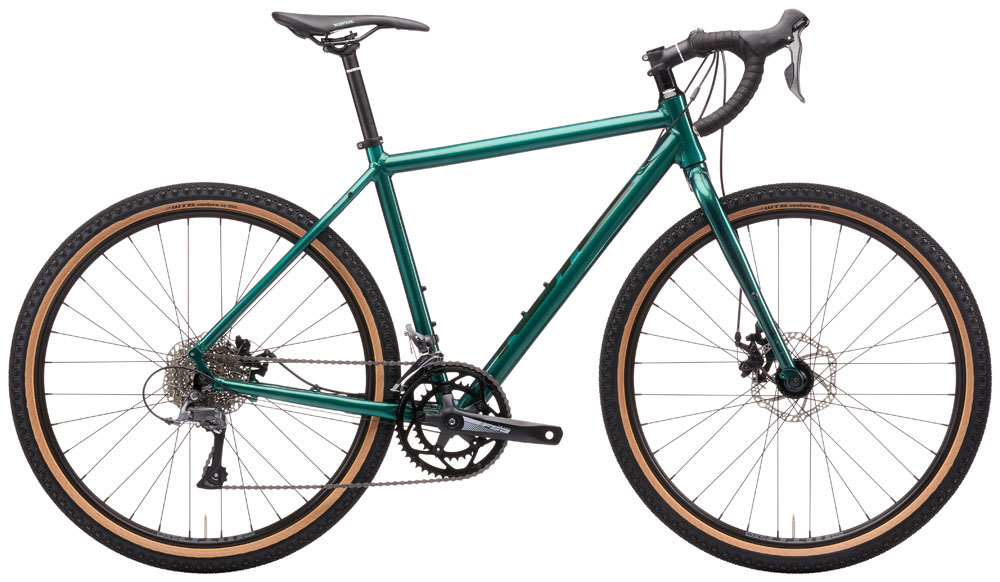 Frame: Aluminum
Frame: Aluminum
Gears: 2 x 8
Tires: 650b x 47mm
Brakes: Mechanical disc
What we like: Great price for a sturdy off-road rider.
What we don’t: Entry-level components; not a high-speed machine.
Just because you can spend thousands of dollars on a race-ready carbon gravel bike doesn’t necessarily mean you should. For budget-oriented riders interested in exploring backroads or taking the scenic route to work, Kona’s Rove AL 650 is plenty of bike. For $949, the Rove includes a quality aluminum frame, ample mounting locations for accessories, water, and gear, and a dependable Shimano Claris drivetrain. Further, its wide 47-millimeter tires do an admirable job soaking up the kind of bumps, ruts, and rocks that you often find on forest service roads.
As with any budget offering, the Rove AL 650 has its fair share of compromises. Compared to the Cannondale above, the Claris is a significant downgrade in both components and features. Most notably, it forgoes thru-axles (which add stiffness and inspire confidence during fast descents) in favor of the quick-release style. Moreover, you miss out on a vibration-dampening carbon fork (the Kona’s is stiffer alloy), and it sports less-powerful mechanical disc brakes rather than hydraulic. For about $300 more, we recommend checking out Cannondale’s Topstone Sora, which addresses many of these issues. But for those hoping to stay under $1,000, Kona’s entry-level Rove is undeniably a good value.
See the Kona Rove AL 650
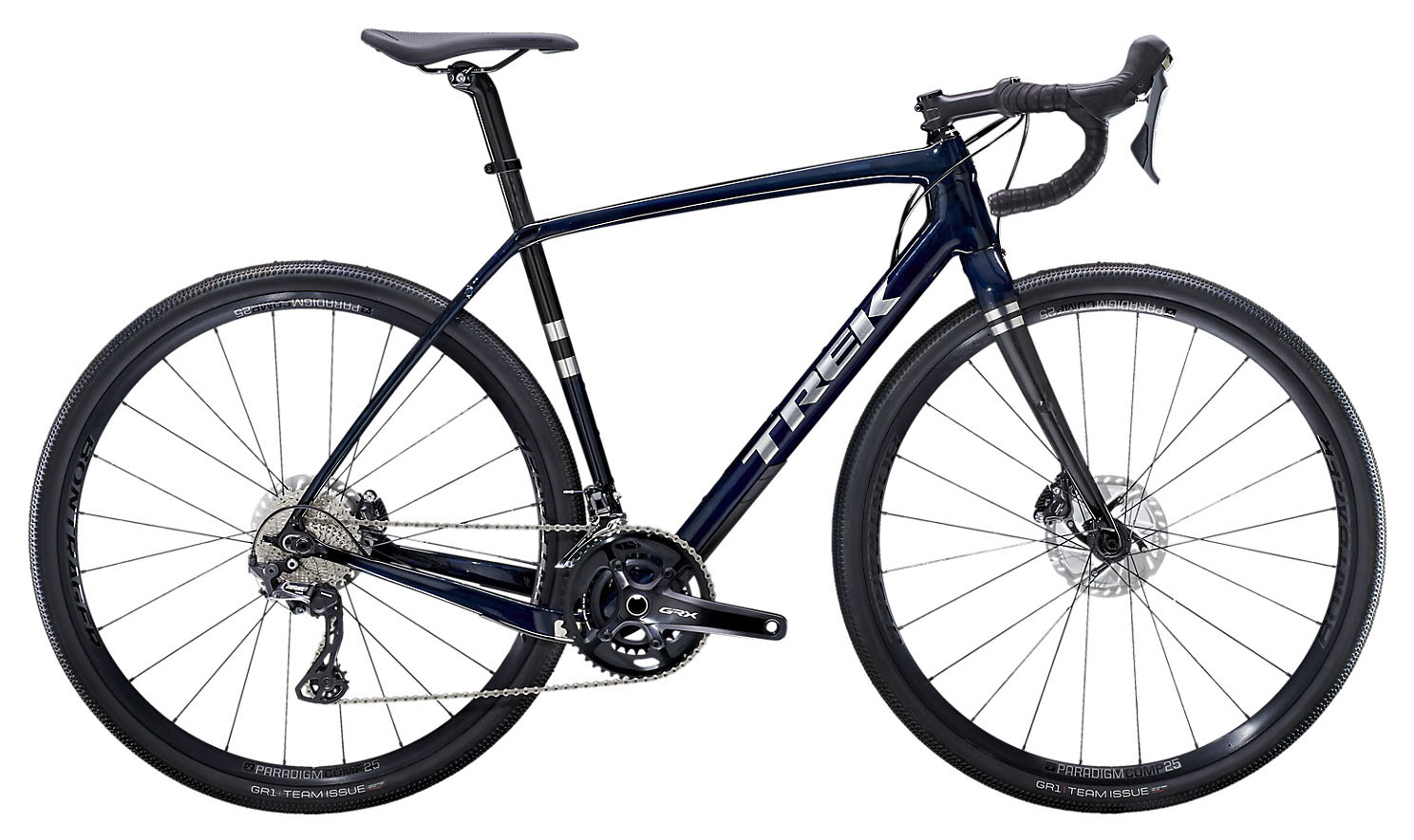 Frame: Carbon
Frame: Carbon
Gears: 2 x 11
Tires: 700c x 40mm
Brakes: Hydraulic disc
What we like: Rear decoupler does a great job of soaking up bumps while retaining efficiency.
What we don’t: The suspension increases cost.
While small, niche bike companies have dominated the gravel race scene for years, this growing category has recently started to attract the big players. With decades of racing experience under their belt, Trek throws their hat into the ring with the Checkpoint SL 6. The biggest news with the Checkpoint is its IsoSpeed, which functions similarly to the rear suspension on a mountain bike. By decoupling the top and seat tubes, this technology effectively reduces vibrations and creates a less jarring, smoother ride. If you’ve ever spent time on washboard roads at speed, you’ll understand why this is so important.
This unique tech and impressive performance do come at a cost. For reference, the top-end variation of the Giant Revolt Advanced above (the “0”) is priced at $100 less than the Trek but includes substantially upgraded components like carbon wheels (the SL 6’s are aluminum). In addition, the IsoSpeed decoupler does add a little complexity to the design and will require occasional maintenance. In the end, if your cycling goals include winning the Dirty Kanza 200, it’s likely worth spending up for the Trek, and its more forgiving ride undeniably is a plus over long and hard miles. But for racers on a tighter budget, there are plenty of options that cost less.
See the Trek Checkpoint SL 6
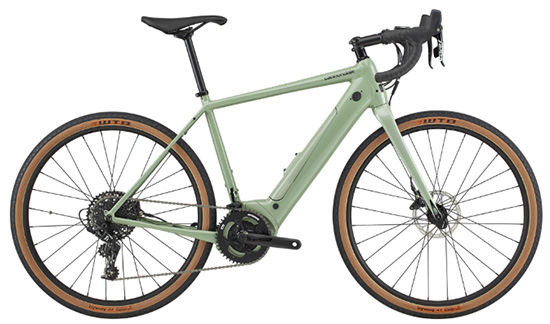 Frame: Aluminum
Frame: Aluminum
Gears: 1 x 11
Tires: 650b x 47mm
Brakes: Hydraulic disc
What we like: E-bikes are a blast to ride.
What we don’t: They’re also very expensive and very heavy.
Love them or hate them, electric bikes are here to stay, and Cannondale’s first go at a gravel-focused model was a huge success in our opinion. After spending some time on the Synapse NEO SE, we came away extremely impressed by the bike’s smooth acceleration, confidence-inspiring ride, and quality build. While the electric Synapse will only assist up to 20 miles per hour (similar to all class 1 e-bikes), this was enough of a grin-maker for even the most skeptical riders among us. You do pay a steep premium for the Bosch drive unit and 500Wh battery, but it’s a boon for daylong enjoyment on remote backroads.
As is the case with all e-bikes, the Cannondale’s battery and motor are very heavy (the Synapse NEO SE weighs in at a hefty 40+ pounds). If you plan to transport your e-bike with any regularity, it’s important to consider the weight limit of your rack and your ability to lift and load the bike. Another issue is power: if you run out of juice on the trail, it’ll be a slow and difficult ride back to your car. And finally, e-bike laws still are evolving and changing, so it’s important to know the rules before you head out. But none of these issues are specific to the Synapse, and if you’re set on an electric model that crosses over nicely between backcountry and road use, we think it’s a true standout.
See the Cannondale Synapse NEO SE
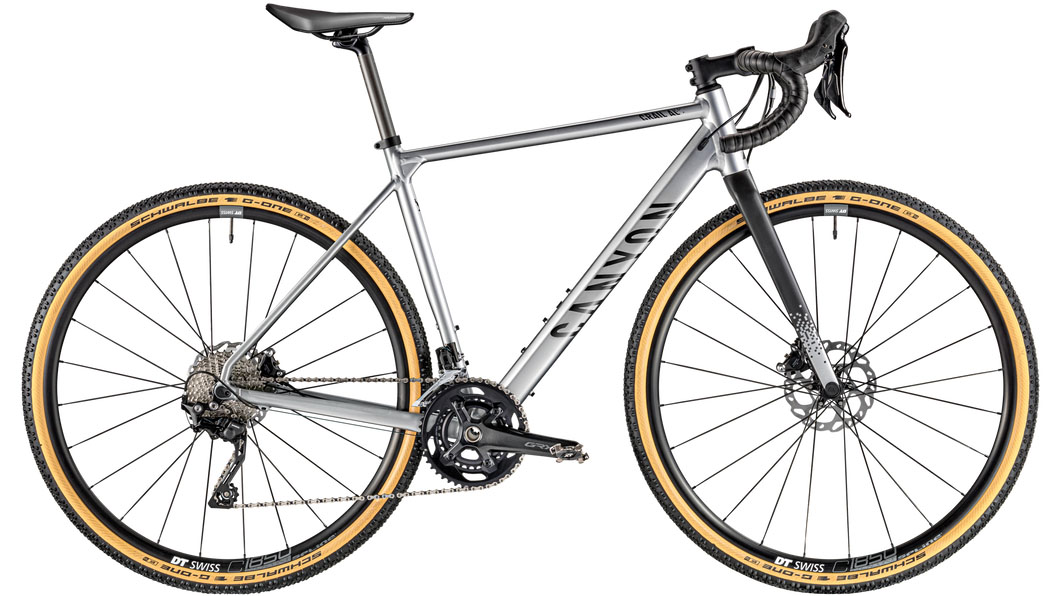 Frame: Aluminum
Frame: Aluminum
Gears: 2 x 10
Tires: 700c x 40mm
Brakes: Hydraulic disc
What we like: Good looks and quality components at a reasonable price.
What we don’t: Buying consumer-direct has its own set of challenges.
Germany-based Canyon might not have the name recognition of many of the brands on this list, but their Grail AL 6 adventure bike is an excellent all-around value. In short, it ticks most of the important boxes in this category, including a high-quality aluminum frame, lightweight carbon fork, and gravel-specific Shimano GRX 400 groupset (note: the GRX 400 series is 10-speed, while the 600 and 800 are 11-speed). The Grail’s proven and tubeless-ready DT Swiss wheels also are wrapped in one of our favorite gravel tires at the moment: Schwalbe’s 40-millimeter G-One Bite, which transition nicely from tarmac to trail. Finally, if appearance is a consideration for you, we think the silver and black version is one of the classiest-looking gravel bike designs on the market.
Compared to the Cannondale Topstone 1 above, the Grail AL 6 costs around $450 less (technically the AL 7 is a more direct competitor at $1,999) but comes up slightly short in a couple key areas. First and foremost, buying from a consumer-direct company like Canyon sometimes can be a pain: availability is often limited and customer service can be hit or miss, plus you don’t get the convenience of walking into your local bike shop to ride the bike or get replacement parts before buying. Further, Cannondale’s lifetime frame warranty is more impressive than Canyon’s six years. But the Grail AL 6 is a solid value nevertheless, which is one of the biggest perks of buying consumer-direct.
See the Canyon Grail AL 6
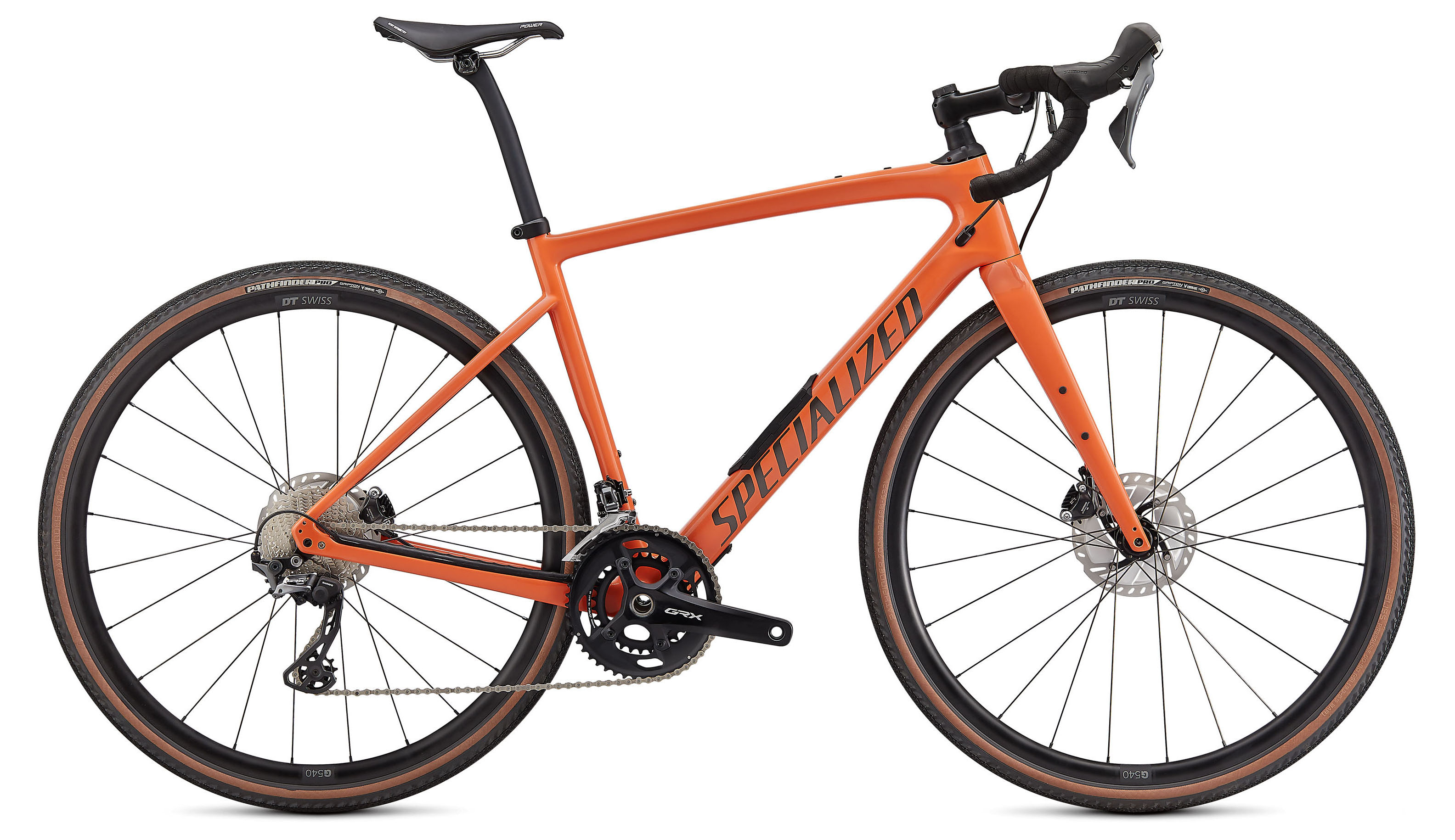 Frame: Carbon
Frame: Carbon
Gears: 2 x 11
Tires: 700c x 38mm
Brakes: Hydraulic disc
What we like: Lightweight carbon frame and front suspension do a great job of taking the edge off while descending.
What we don’t: Like the Trek Checkpoint, you pay extra for the suspension.
California-based Specialized is one of the biggest names in cycling, so it should come as no surprise that they offer a winner in the gravel-focused Diverge line. Similar to Trek’s Checkpoint SL 6 above, the most noteworthy component on the Diverge is its suspension that delivers a relatively high 20 millimeters of travel. But unlike the Trek, the Specialized bike focuses its shock absorption at the front rather than the rear. For anything from surprise impacts with rocks to rough washboard roads, this feature will considerably dampen your ride and reduce arm fatigue.
How does the rest of the build compare with the aforementioned Trek? The Diverge gets the edge in max tire clearance (47mm vs. 45mm on the Checkpoint) and includes in-frame storage with their unique and very functional SWAT system. That said, you get a little more cushion with the Trek and a very similar component group (including the same GRX 810 drivetrain) while saving $200. It’s a close call, but we give the slight edge to the Trek as a do-everything model that can still toe the race line. Of note, Specialized’s Diverge lineup is expansive, starting at $1,300 and going all the way up to $10,500, so most riders should be able to find exactly what they’re looking for.
See the Specialized Diverge Comp Carbon
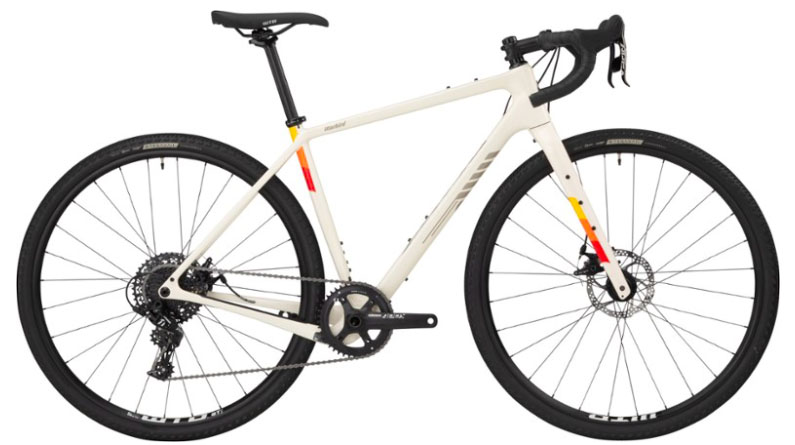 Frame: Carbon
Frame: Carbon
Gears: 1 x 11
Tires: 700c x 42mm
Brakes: Mechanical disc
What we like: Excels at racing but can still carry gear for overnight trips.
What we don’t: At this price, we expect hydraulic disc brakes and slightly better components.
We’d be remiss not to include Salsa’s venerable and highly sought-after Warbird on this list. Originally launched in 2013, the Warbird saw a host of changes at its last update: the geometry was tweaked slightly for improved stability at speed, a number of mounting locations were added to the frame, and the bike is now compatible with 650b wheels and tires up to 2 inches wide. We especially like the Waxwing fork, which features three-pack mounts that add versatility for storing water bottles or shuttling overnight gear. All told, Salsa’s fourth-generation Warbird is an enviable gravel race bike that happily pulls double duty as a lightweight bikepacking rig for weekend trips.
Our biggest complaint about the Warbird Apex is cost. At $2,799, we think there are better deals to be had in the gravel bike category. For example, the Giant Revolt Advanced 2 above comes in around the same price and features a more versatile drivetrain with a wider gear range (better for mountainous terrain). And although the Warbird’s high-performing TRP Spyre mechanical disc brakes are one of the better options of their kind on the market, they simply can’t match the ease of use or stopping power of the hydraulic version on the Giant. That said, the Warbird’s additional storage spots on the frame and fork make it better-suited for all-day epics and backcountry adventures. If versatility is a key consideration, we think it’s a nice choice.
See the Salsa Warbird
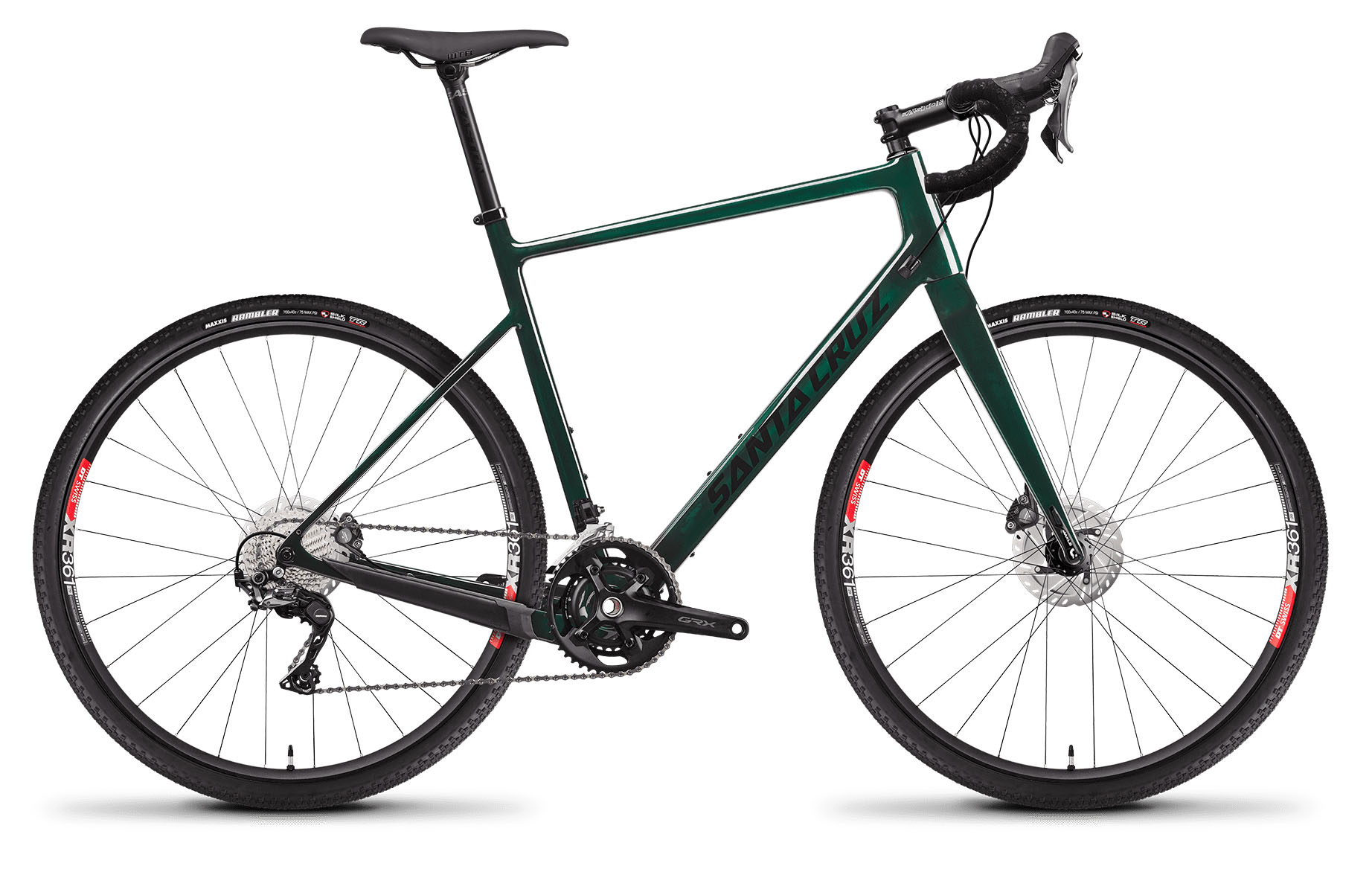 Frame: Carbon
Frame: Carbon
Gears: 2 x 11
Tires: 700c x 40mm
Brakes: Hydraulic disc
What we like: Typical Santa Cruz craftsmanship and attention to detail.
What we don’t: Not the best value.
Santa Cruz is lauded within the mountain biking community for their quality frames and remarkable attention to detail, and that reputation holds true with the gravel-oriented Stigmata. For last year, the Stigmata was redesigned with additional clearance for tires up to 45 millimeters wide (as well as 650b tires), updated geometry with a slightly longer head tube that translates to a more upright and comfortable riding position, and internal routing for dropper seat post compatibility. What does all this mean for you? In short, the versatile Stigmata is now just as at home on the cyclocross course as it is on far-off backroad adventures.
Where does the Stigmata fall short? Like all Santa Cruz bikes, the gravel rig is undeniably pricey at $4,649 for the GRX model, which includes the high-end 800 groupset. For $400-$600 less, the Trek and Specialized models above feature similar components but include a notable upgrade in ride quality over bumpy terrain with their proprietary suspension designs. That said, buying from Santa Cruz involves paying a premium for the brand’s attention to detail (all models are admittedly fantastic-looking), strong warranty, and reliable long-term performance. Whether that’s worth the added expense is up to you.
See the Santa Cruz Stigmata GRX See the Women's Juliana Quincy GRX
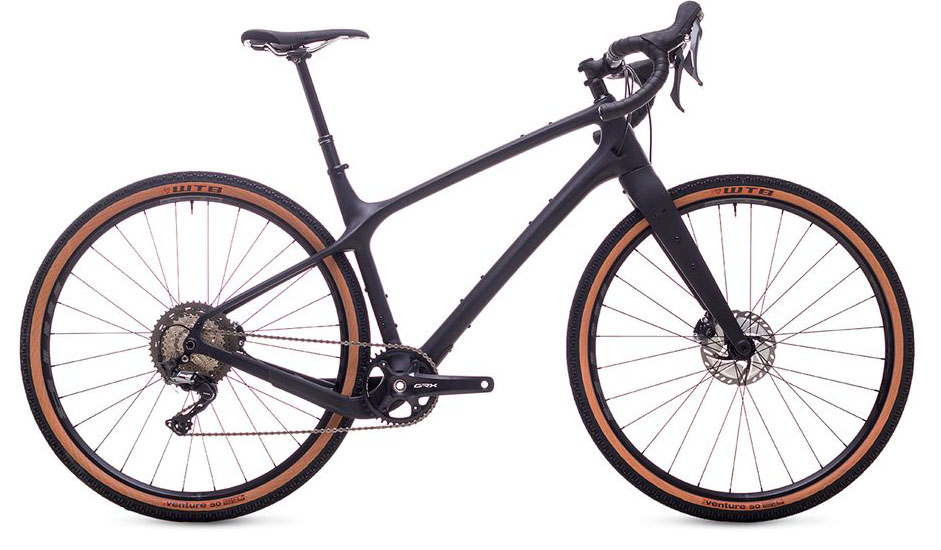 Frame: Carbon
Frame: Carbon
Gears: 2 x 11
Tires: 700c x 50mm
Brakes: Hydraulic disc
What we like: Downhill-oriented geometry and components.
What we don’t: Limited build options and not a standout climber.
Evil is known for their progressive designs in the mountain bike world, and they’ve translated that to their playfully named Chamois Hagar gravel bike. The big news is its geometry, which has a downhill-oriented 66.67-degree head angle for an aggressive stance that’s impressively stable and confidence-inspiring on the descent (for reference, most gravel bikes are around 70 degrees or higher). There are only two build kits currently offered (plus a frame-only option), but the GRX model is well-appointed with high-end 800-series components, an all-carbon frame, and off-road extras like a dropper post and meaty tires. At $4,799, the Evil is not a price leader, but its fun factor is hard to beat.
What do you give up with the Chamois Hagar’s unique build? Uphill-focused riders that want a twitchy and extremely responsive ride won’t like the laidback stance or beefed-up construction, which adds weight. And the standard 50-milllimeter-wide tires are not the fastest-rolling or lightest around. If you plan to mix in a fair amount of extended and steep climbing and prioritize efficiency, it’s best to stick with a traditional, road-inspired design. But for mountain bikers looking for a familiar, fun feel while bombing down their local forest service road or even popping off small features, Evil’s gravel grinder has a lot of appeal.
See the Evil Bikes Chamois Hagar
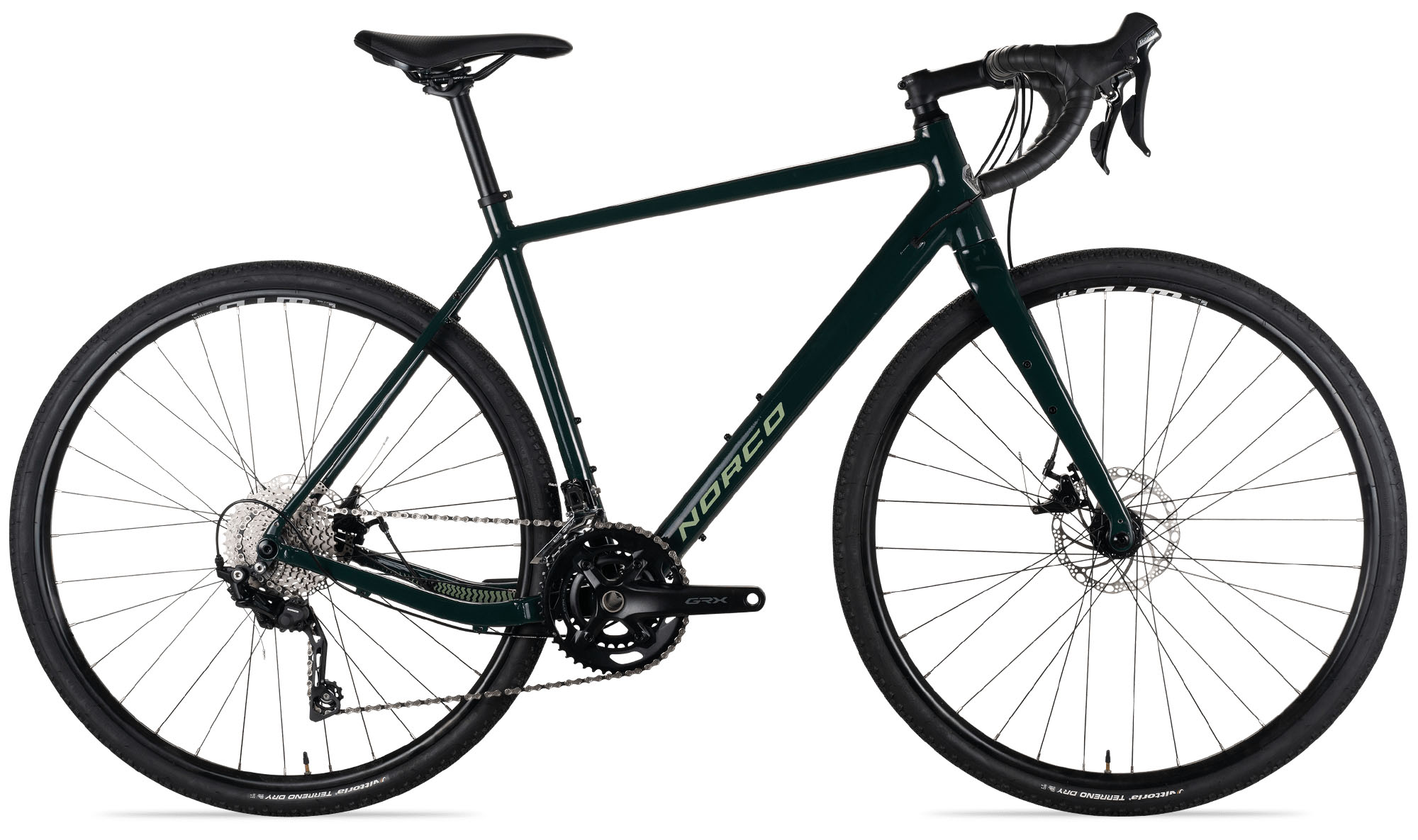 Frame: Aluminum
Frame: Aluminum
Gears: 2 x 10
Tires: 700c x 38mm
Brakes: Mechanical disc
What we like: Good overall performance for a palatable price.
What we don’t: Downgraded drivetrain.
Better known for their extensive lineup of mountain bikes, Norco did a nice job with the dirt-focused Search XR A2. For a reasonable $1,699, you get a 2 x 10 Shimano drivetrain that works well across most terrain along with a healthy selection of mounting locations for racks, bottles, and gear. Further, you get thru-axles for a stiffer ride in the rough stuff and tubeless-ready wheels (in our opinion, it’s is a no-brainer to set up your gravel bike this way for less weight, fewer flats, and more grip). While it can’t match the racing pedigree of the Trek Checkpoint SL or versatility of the Salsa Warbird above, the Search XR is an impressively capable companion for everything from backroad exploring to daily commutes.
At this price point, however, there are some entry-level components in the build. It’s nice to see Shimano GRX derailleurs and crank, but the shifters are from the road-focused Tiagra line, so they’re not as user-friendly on gravel. In addition, you get less-powerful mechanical brakes and the tires aren’t the best in slippery and dicey conditions, so many backcountry explorers will want to upgrade those right off the bat. For those looking for a little more capability at a still-reasonable price, check out Norco’s XR A Suspension model ($2,399), which features a front fork with 50 millimeters of travel and a dropper seat post.
See the Norco Search XR A2
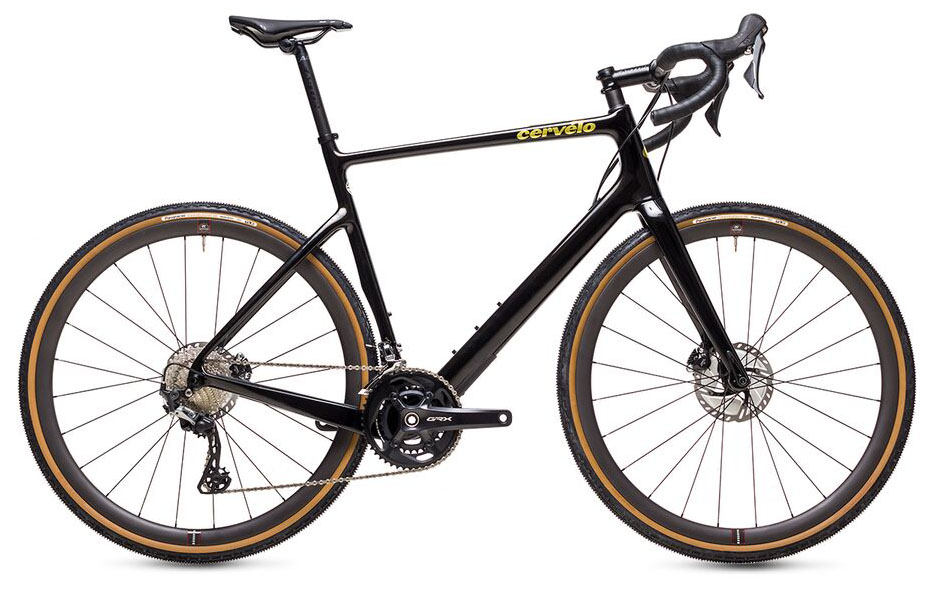 Frame: Carbon
Frame: Carbon
Gears: 2 x 11
Tires: 700c x 38mm
Brakes: Hydraulic disc
What we like: Fast and responsive with a flickable feel.
What we don’t: Less capable in rough terrain and descending at speed.
Cervelo has made their name in light, fast, and aerodynamic pavement racers, and they’ve taken that expertise into the gravel world with their Aspero collection. As expected from the brand, the Aspero models put a premium on climbing speed and responsiveness with a high-quality and very lightweight carbon frame, upright geometry that gives it a quick-handling and nimble feel, and a nice spec sheet with efficiency-minded components. Tack on off-road-ready features like protection along the chain stays and downtube and dropper post compatibility (note: a dropper is not included), and you get a nice option for road riders looking to add a gravel grinder to their quiver.
As expected, the Aspero’s road-inspired geometry and build make it far less stable and more prone to getting knocked around on steep and rowdy descents. Put another way, it’s the polar opposite of the Evil Chamois Hagar above, which crushes the downhills at the expense of power and efficiency when pedaling. It’s also worth noting the max tire width for the Aspero is 42 millimeters, which is a few millimeters less than most designs on this list. It’s not for everyone, but for riders that stick to relatively tame terrain and want a race-ready screamer, the Aspero is a great choice. Finally, Cervelo recently released the Apero 5 series, which is a lighter, faster, and even pricier version of the standard model here.
See the Cervelo Aspero GRX 810 2x
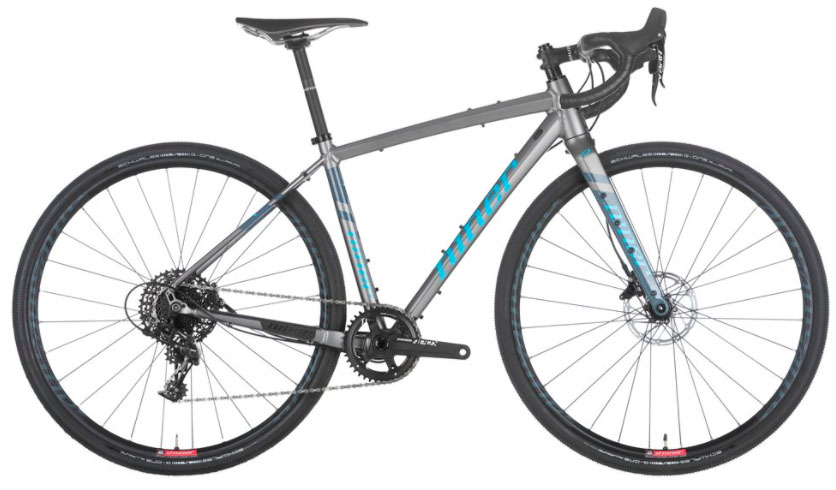 Frame: Aluminum
Frame: Aluminum
Gears: 1 x 11
Tires: 700c x 40mm
Brakes: Hydraulic disc
What we like: Classic old-school looks and off-road features.
What we don’t: Cannondale’s Topstone costs $50 less and performs better across most categories.
Niner may not be a familiar name to many road cyclists, but this Colorado-based company has been pushing out quality dirt-focused models for about 15 years. From their lineup, the RLT 9 2-Star is a solid budget-minded build: it features SRAM’s Apex 1 x 11 drivetrain and hydraulic disc brakes, can fit up to 700c x 50mm tires, and includes mounting locations for racks and fenders (the carbon fork even has additional spots for storing extra water on those all-day rides). Not to mention, we can’t help but love the old-school look of the RLT’s aluminum frame.
Compared to the top-ranked Cannondale Topstone 1 above, the Niner RLT 2-Star costs around the same (it's $50 pricier) yet sees a slight downgrade in the drivetrain department with its 1x drivetrain (the Cannondale features 2x Shimano GRX components). Not only does this include a wider gear range, but the Shimano parts are a little better tuned for off-road riding with easier-to-manipulate shift levers. Within the Niner lineup, you can get GRX components, but they’re only available in top-end 800-spec models that start at about $3,000.
See the Niner RLT 9 2-Star
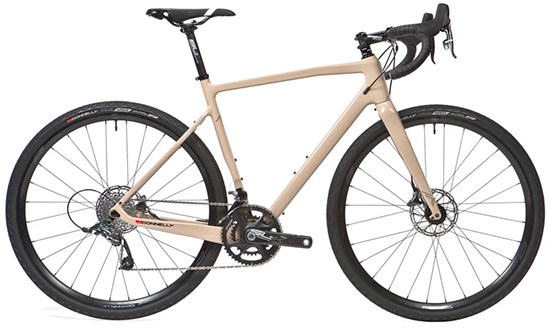 Frame: Carbon
Frame: Carbon
Gears: 2 x 11
Tires: 700c x 40mm
Brakes: Hydraulic disc
What we like: Race-inspired design and geometry; premium build.
What we don’t: Not a great all-rounder.
If you’ve never heard of Donnelly Cycling, you’re not alone. Formerly Clement, this niche and adventure-oriented company made its name in the tire arena, but in 2018 decided to shift its focus to dedicated cyclocross and gravel bikes. The G//C Force listed here is purpose-built to own gravel roads with a race-oriented ethos, smartly spec’d build kit, and high-quality, tubeless-ready wheels and tires made by Donnelly themselves (the bike comes stock with 700c wheels, but it can also accommodate 650b). All told, there’s a lot to like about the speed-hungry G//C Force.
If you’re looking for a capable all-rounder, however, you’ll likely be better served by a bike like Salsa’s Warbird above. With additional mounting locations for food, water, and gear, the Warbird more effectively moonlights as a backcountry adventure machine. Alternatively, those consistently tackling long, steep grades likely will prefer the Giant Revolt Advanced 2’s wider gear range (although the G//C Force is perfectly adequate for riding rolling terrain). For a step down in price, check out Donnelly’s G//C Rival, which shares the same carbon frame and wheel compatibility as the Force but with a slightly downgraded drivetrain.
See the Donnelly G//C Force
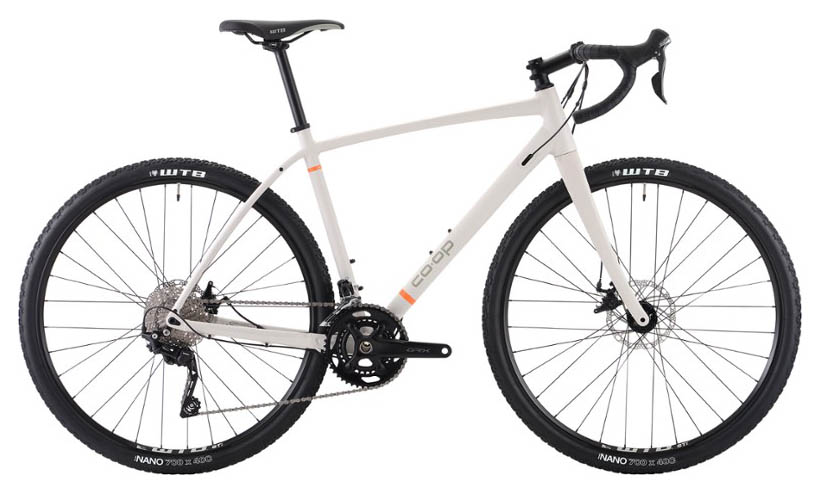 Frame: Aluminum
Frame: Aluminum
Gears: 2 x 10
Tires: 700c x 40mm
Brakes: Mechanical disc
What we like: Solid feature set for those dabbling in the sport.
What we don’t: Fairly heavy and middling performance overall.
For riders just dipping their toes into the gravel world, Co-op Cycles’ ADV gravel bikes have a lot of appeal. For one, it’s a fairly simple buying process: Co-op Cycles is REI’s in-house bike brand, which brings nationwide access to shops, easy assembly and maintenance, and a reliable warranty. And their ADV collection includes solid performers like the mid-range 2.2, which comes in at a very competitive $1,599. For this price, you get the entry-level Shimano GRX component group, which is well-made but comes with slight compromises like a 10-speed cassette (compared with 11 for the upgraded versions). You also miss out on some nice upgrades like hydraulic disc brakes, although the Tektro mechanicals are decent performers and don’t require much in terms of maintenance.
As expected, the ADV 2.2 shouldn’t be on the short list for those looking for a speedy machine, but the design in general is well-balanced. The WTB Nano tires are proven performers, the wheels are tubeless-ready, and the bike has a sturdy feel to it in general. That said, it’s not an agile design and weight is decently high (REI gives it a median weight of over 23 pounds). As such, those looking for a longer-term investment may want to spend up to the Cannondale Topstone above—which is also sold through REI Co-op—but casual riders looking to add some gravel time to their weekends will likely be very happy with the ADV 2.2.
See the Co-op Cycles ADV 2.2
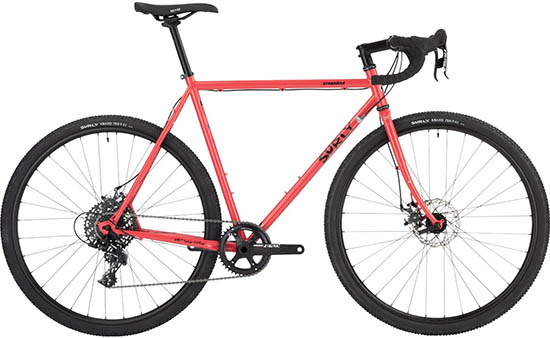 Frame: Steel
Frame: Steel
Gears: 1 x 11
Tires: 700c x 41mm
Brakes: Mechanical disc
What we like: Quality steel frame and versatile geometry.
What we don’t: Heavier and more expensive than aluminum models.
One of only two steel-framed designs on our list, the Surly Straggler is a gravel bike with a do-it-all personality. Although quite a bit heavier than the carbon and aluminum models above, the Straggler’s smooth-riding steel frame and classic design are ideal for those who prioritize comfort and durability over speed and new tech. Other notable features include a 1 x 11 drivetrain for ultimate simplicity, multiple mounting spots for racks and gear, and fender mounts for rainy-day commutes. From all-out touring to weekend gravel rides and everything in between, the Straggler makes for a solid one-bike quiver.
What pushes the Straggler towards the bottom of our list? For less than $100 more, alternatives like Canyon’s Grail 6 above are lighter, have a wider gear range, feature better stopping power with hydraulic rather than mechanical disc brakes, and include thru-axles for a more efficient ride. All that said, there’s a reason behind the saying “steel is real.” In short, it’s hard to ignore the ride characteristics, burly feel, and long-term durability of a steel build. If you take care of the Straggler, it should last for many years to come.
See the Surly Straggler
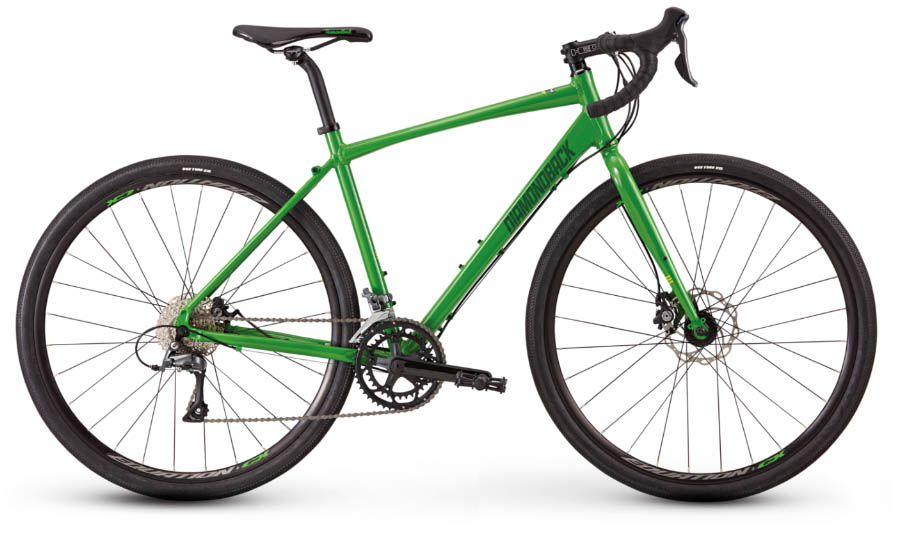 Frame: Aluminum
Frame: Aluminum
Gears: 2 x 8
Tires: 700c x 38mm
Brakes: Mechanical disc
What we like: Approachable price point for a quality do-everything ride.
What we don’t: Less comfortable off road than the Kona Rove above.
Diamondback is best known for their budget-friendly bikes sold at big-box stores, but being value-driven isn't necessarily a bad thing. In the gravel realm, we especially like their Haanjo 2, which is the most affordable design to make our list at $925. This entry-level ride features a 2 x 8 Shimano drivetrain, decently fast-rolling 38-millimeter tires, and mechanical disc brakes that are easy to operate and provide consistent stopping power. To be sure, the Haanjo 2 can’t match the performance or low weight of pricier models on the list, but it’s a serviceable companion for those who do a little bit of everything—including commuting, cruising mellow doubletrack, and exploring forest service roads.
With a similar price and component group (Shimano’s budget-focused Claris) as the Kona Rove above, the two bikes are natural competitors. In parsing out the differences, the 650b Kona has wider tires and does a nicer job cushioning impacts on washboard roads, while the narrower and faster-rolling Diamondback is the superior option for commuting and mixing in longer stretches on pavement. Both offer a nice entry point into the world of gravel riding, but the more capable Kona gets the edge for us.
See the Diamondback Haanjo 2
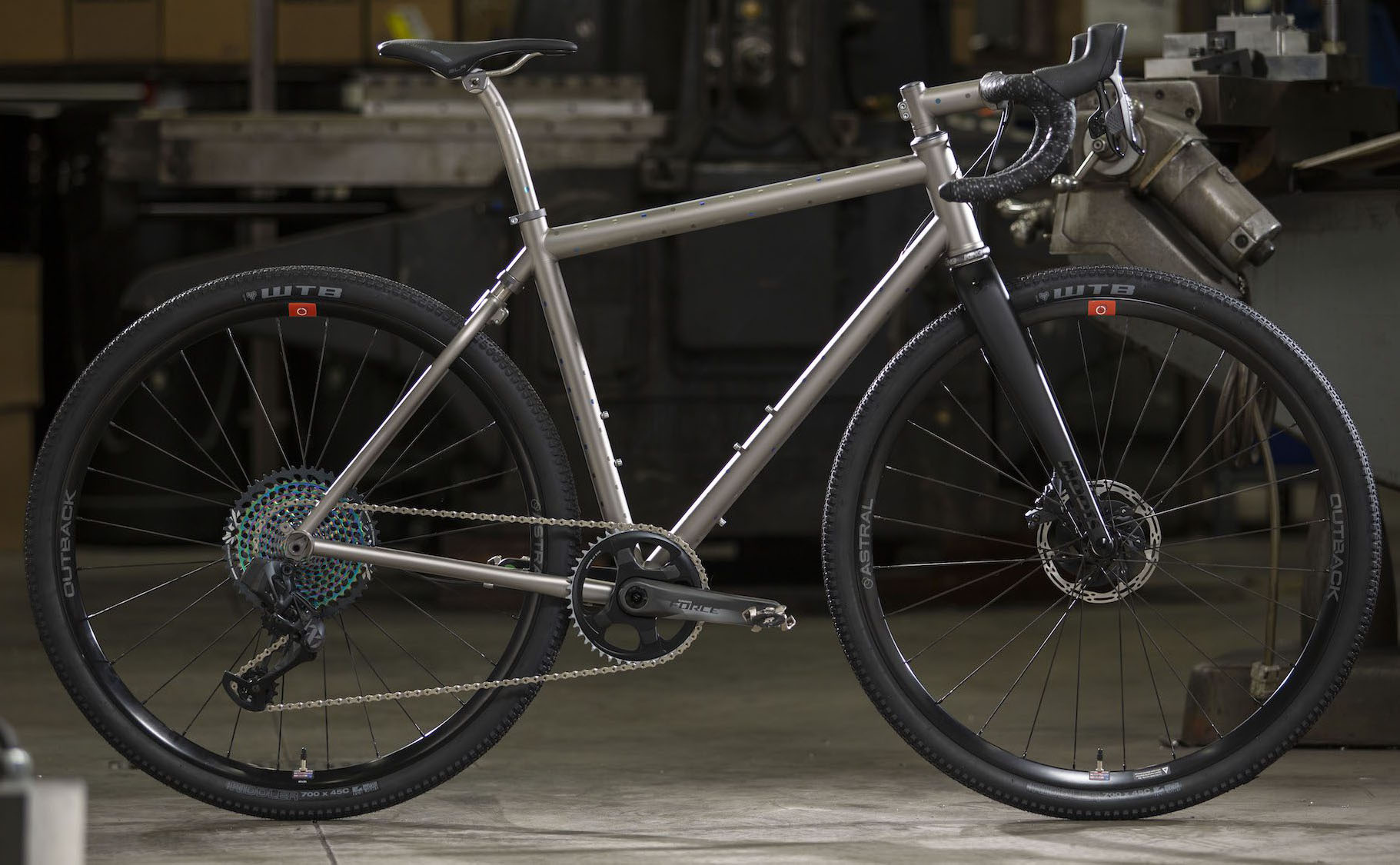 Frame: Titanium
Frame: Titanium
Gears: 2 x 11
Tires: 700c x 43/50mm
Brakes: Hydraulic disc
What we like: Titanium softail frame and large tires are great for rugged roads.
What we don’t: The most expensive gravel bike on the list.
Moots’ Routt lineup has been around for years, but it’s the latest YBB version that really caught our eye. The “softail” design—first used on the company’s mountain bikes in the 90s—delivers 20 millimeters of rear micro-suspension that effectively reduces the harshness of rough roads. Combined with a smooth-riding titanium frame and beefy tires (up to 50mm wide), and this is a true backroads rig that’s ready to handle just about anything you throw at it. The elite-level build listed here also features the crisp shifting of SRAM’s electronic Force AXS drivetrain. Taken together, if price were no issue and we could only ride one gravel bike for the rest of our lives, it almost certainly would be the Routt YBB.
Now it’s time to address the elephant in the room. At well over $9,000, the Routt YBB is reserved for committed cyclists who ride often and ride hard (and have deep pockets). On the flip side, titanium undoubtedly is pricey, but Moots uses a high-quality, U.S.-made version that’s welded in-house at the company’s headquarters. In other words, it’s hard to put a price on such excellent craftsmanship. For those on a tighter budget who don’t want to make big sacrifices in ride quality, Trek’s Checkpoint SL 6 above is well under half the price and features similar bump-absorbing tech with its rear IsoSpeed.
See the Moots Routt YBB Force AXS
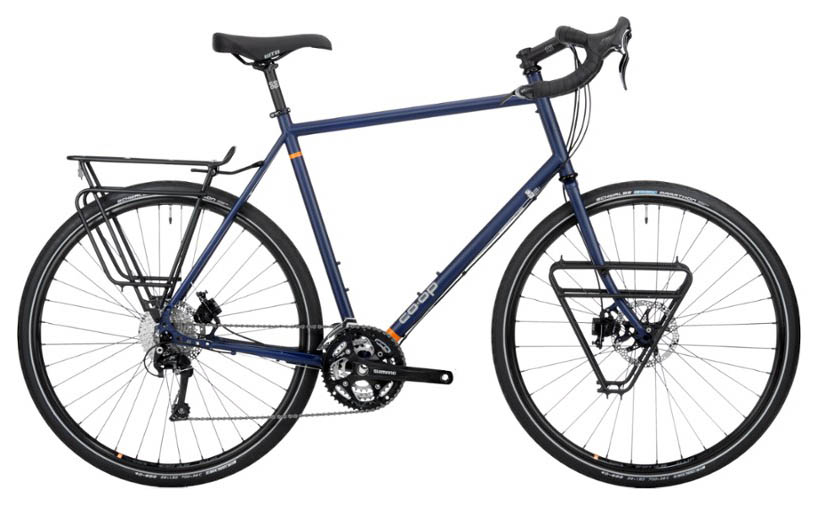 Frame: Steel
Frame: Steel
Gears: 3 x 10
Tires: 700c x 38mm
Brakes: Mechanical disc
What we like: Touring-ready with a steel frame and included racks.
What we don’t: Very heavy.
Co-op Cycles isn’t known for pushing the envelope in terms of frame design or technology, but what they offer is a major focus on value. The steel-framed ADV 1.1 is a prime example: for $1,599 (and often marked down further during sales), the ADV is a solid all-rounder that can confidently tackle adventures ranging from gravel road exploration to extended bikepacking and bike touring outings. And with a comfortable upright seating position, wide gear range, and included front and rear racks, it makes for a solid commuting companion too.
Why isn't the Co-op Cycles ADV 1.1 ranked higher? The steel frame and reasonably fast-rolling 700c x 38mm tires make for a comfortable ride on pavement and light gravel, but they also add a lot of weight. At about 30 pounds, the ADV is easily the heaviest bike on our list (not including Cannondale’s Synapse e-bike, which really is a different category). If the goal is covering ground quickly and efficiently, we recommend checking out a more focused design like Co-op Cycles’ ADV 2.2 above, which cuts significant weight, has more off-road-oriented tires, and features more performance-oriented geometry for the same price. All that said, the ADV 1.1 has its place for everything from cross-country trips to easygoing and leisurely outings.
See the Co-op Cycles ADV 1.1
| Bike | Price | Frame Material | Gears | Tires | Brakes |
|---|---|---|---|---|---|
| Cannondale Topstone 1 | $2,150 | Aluminum | 2 x 11 | 700c x 38mm | Hydraulic disc |
| Giant Revolt Advanced 2 | $2,600 | Carbon | 2 x 11 | 700c x 38mm | Hydraulic disc |
| Kona Rove AL 650 | $949 | Aluminum | 2 x 8 | 650b x 47mm | Mechanical disc |
| Trek Checkpoint SL 6 | $4,000 | Carbon | 2 x 11 | 700c x 40mm | Hydraulic disc |
| Cannondale Synapse NEO SE | $4,500 | Aluminum | 1 x 11 | 650b x 47mm | Hydraulic disc |
| Canyon Grail AL 6 | $1,699 | Aluminum | 2 x 10 | 700c x 40mm | Hydraulic disc |
| Specialized Diverge Comp Carbon | $4,200 | Carbon | 2 x 11 | 700c x 38mm | Hydraulic disc |
| Salsa Warbird | $2,799 | Carbon | 1 x 11 | 700c x 42mm | Mechanical disc |
| Santa Cruz Stigmata GRX | $4,649 | Carbon | 2 x 11 | 700c x 40mm | Hydraulic disc |
| Evil Bikes Chamois Hagar | $4,799 | Carbon | 2 x 11 | 700c x 50mm | Hydraulic disc |
| Norco Search XR A2 | $1,699 | Aluminum | 2 x 10 | 700c x 38mm | Mechanical disc |
| Cervelo Aspero GRX 810 2x | $4,500 | Carbon | 2 x 11 | 700c x 38mm | Hydraulic disc |
| Niner RLT 9 2-Star | $2,200 | Aluminum | 1 x 11 | 700c x 40mm | Hydraulic disc |
| Donnelly G//C Force | $4,000 | Carbon | 2 x 11 | 700c x 40mm | Hydraulic disc |
| Co-op Cycles ADV 2.2 | $1,599 | Aluminum | 2 x 10 | 700c x 40mm | Mechanical disc |
| Surly Straggler | $1,625 | Steel | 1 x 11 | 700c x 41mm | Mechanical disc |
| Diamondback Haanjo 2 | $925 | Aluminum | 2 x 8 | 700c x 38mm | Mechanical disc |
| Moots Routt YBB Force AXS | $9,853 | Titanium | 2 x 11 | 700c x 43/50mm | Hydraulic disc |
| Co-op Cycles ADV 1.1 | $1,599 | Steel | 3 x 10 | 700c x 38mm | Mechanical disc |
As their name suggests, gravel bikes are designed to be ridden on surfaces like gravel trails, doubletrack, and forest service roads. While people have been taking their road bikes onto unpaved roads for decades, this emerging category has a number of thoughtful design features that make the experience much more enjoyable. In general, you should look for frame clearance to accommodate up to 700c x 45mm tires, multiple mounting locations (three or more) for water bottles and food, longer wheelbases that are more stable at high speeds, and disc brakes to handle long descents over varying road conditions. Put simply, gravel bikes can continue on when traditional roads bikes are forced to turn around, and they can easily handle the daily commute to work too.
.jpg)
From the list above, you’ll notice that carbon and aluminum are by far the most popular materials for gravel bike frames. You also might come across steel (including the Surly Straggler and Co-op Cycles ADV 1.1 ) or titanium (like the Moots Routt YBB), but these are far less common. Carbon is the lightest material of the bunch and often the choice among gram-counters and speed-focused riders. Additionally, because carbon bikes are made with molds instead of welds, companies are able to better “tune” their ride characteristics, making them more compliant for comfort or stiffer for better power transfer and efficiency. Salsa’s Warbird, for example, has been through many iterations over the years in search of that perfect balance.
All that said, carbon bikes are quite pricey, and you can often get a similarly equipped aluminum model for hundreds of dollars less. Although heavier than carbon, aluminum typically is more durable, and even heftier steel and titanium rigs will stand up to years of use and abuse. For the majority of casual cyclists, we recommend sticking with an aluminum gravel bike simply to get the best bang for your buck.
_0.jpg)
Most gravel bikes come with one of two popular drivetrain options: 1x (which features a single front chainring and fewer overall gears) or 2x (which has two front chainrings and more gear options). We love 1x drivetrains for their simplicity, ease of use, and generally lower weight. And because of the fewer gears (typically 11-12 vs. the 16-22 found on 2x systems), we think they’re a great match for fit riders and those whose frequent rolling terrain as opposed to steep climbs and descents. That said, we prefer 2x setups for more mountainous terrain. Although they generally weigh a bit more than 1x drivetrains, 2x systems (like the 2 x 11 included on the Cannondale Topstone 1) typically offer the rider both an easier gear for the uphill and a harder gear for the flat sections. Of course, it’s possible to modify a 1x system with a larger-range cassette, but we prefer the convenience of sticking with the original components.
.jpg)
700c
In general, 700c wheels and tires offer the best overall performance for mixed-terrain riding, and they continue to be the most common option for gravel bikes. 700c tires are narrower than 650b options, usually weigh less, and roll faster on tarmac and most gravel paths. Further, when the time comes to replace your tires (or you simply need a different tread pattern that better suits your local terrain), there are significantly more options available in the 700c size. In the end, unless you spend the vast majority of your time on exceptionally rough gravel, we think 700c tires and wheels are the best choice for all-around riding.
650b
Alternatively, if comfort is your main priority or you spend almost all of your time on gravel, then a 650b tire and wheel combo makes a lot of sense. Although they are heavier and roll slower than 700c wheels, the larger footprint and lower air pressure allows them to float over obstacles much more smoothly. The bigger contact patch with the ground also translates to increased traction, which can be especially helpful on soft or loose sections of road. As gravel riding expands into increasingly rugged terrain, 650b tires are becoming more and more common (including our top budget pick, Kona Rove AL 650). However, if you consistently frequent pavement and mellow trails, you’ll probably be better served by 700c wheels described above.
.jpg)
Another choice you’ll have to make when choosing a gravel bike is whether you want hydraulic or mechanical disc brakes. In short, the main differences between the two relate to power and ease of use. Mechanical brakes, as their name implies, use a cable system to actuate the brakes and slow you down. Hydraulic disc brakes, on the other hand, use fluid rather than cables to initiate the brakes. This means that hydraulic brakes provide better stopping power with less effort, are easier to control and fine-tune, and can’t get clogged with trail debris and mud (mechanical brake cables can easily get dirty and rust over time). In the end, the choice often comes down to cost: hydraulic brakes come with a bump in price, while mechanical brakes can be found on most budget-friendly models.
.jpg)
Tires are an often-overlooked component, but as the only thing connecting you to the ground, are an important consideration for gravel riding. There is no one-size-fits-all tire, but we do have some recommendations regarding tread patterns, sizes, and widths. For those who spend the majority of their time on pavement but like to explore the occasional gravel road or path, we’d pick something in the 30- to 32-millimeter range with a slick or herringbone tread pattern. In short, they roll fast on tarmac, weigh very little, and provide an ample amount of comfort and traction. Tires in the 35- to 38-millimeter range are more versatile and a great choice for those who split their time evenly between pavement and gravel. Tires in this size come in a variety of tread patterns which cover everything from smooth slicks to knobby options (resembling mini mountain bike tires). In this category, we really like Schwalbe’s fast-rolling and surprisingly grippy 700c x 38mm G-One.
.jpg)
Last but not least, if you frequent gravel more than pavement, we recommend opting for a tire that is 40 millimeters or wider. While these larger sizes will be heavier and roll slower on pavement than the skinnier options above, the added comfort and traction they provide off-road is well worth the tradeoff. We’re particularly fond of two tire manufacturers at the moment: WTB and Donnelly. Both brands offer a solid lineup of sizes and tread patterns that cover everything from smooth road tires to aggressive gravel options. And one final note: if you’re upgrading or replacing tires on an existing bike, it’s important to make sure you have enough room for these larger sizes. At a minimum, we like 3 to 4 millimeters of clearance to account for mud and debris between the tire and frame.
One of the most important parts of bike setup is properly adjusting tire pressure, which is measured in pounds per square inch (psi). Too much pressure will result in bouncing down the path or road and feeling every little bump along the way. Too little pressure, on the other hand, will make you feel as though you’re riding with the brakes on and can result in flat tires or bottoming out your rims on rocks. The ideal tire pressure lies between these two extremes, but unfortunately, there’s no universal number—there simply are too many factors to account for, including rider weight, tire width, surface type, and riding style.
All that said, we do have some general advice on how to find an appropriate psi. To start, inflate your tires to the maximum pressure labeled on the sidewall. Next, lay an object larger than a pencil in your driveway or on the sidewalk—a wooden dowel or mixing spoon handle works great—and ride over it at a comfortable speed (about 10mph). You’ll likely feel the object beneath you. Lower your tire pressure by 3 to 5 psi and repeat this process again until you barely feel the item. Make note of this pressure and take your bike for a real ride. During your outing, think about how your tires feel and consider any adjustments that you might want to make (this goes for every outing, not just your first). While experienced cyclists might balk at this method, it’s a great way for new riders to understand and learn to adjust pressure based on conditions, terrain, and other factors. And a final note: we recommend running anywhere from 3 to 8 psi less in your front tire than the back as most of your weight is over the rear.
_0.jpg)
Suspension isn’t common on gravel bikes, but it’s nevertheless important to explain for those looking for a smoother and more comfortable ride. From the picks above, the Trek Checkpoint SL 6, Moot Routt, and Specialized Diverge Sport all feature some sort of suspension-like technology or dampers to help take the edge off big potholes and washboard roads. We particularly like Trek’s IsoSpeed on the Checkpoint SL 6, which decouples the top tube and seat tubes to create a less jarring ride. Alternatively, Specialized focuses their tech at the front of the Diverge Sport, which they equate to about 20 millimeters of suspension travel. And finally, Cannondale's Kingpin rear suspension offers up to 30 millimeters of travel via a thru-axle pivot connecting the seat stay and seat tube. Price goes up with the added tech (Cannondale's Topstone Lefty 3 runs $4,250), but if you spend a good amount of time at speed on exceptionally rough roads, it may be worthwhile to consider one of the models listed above.
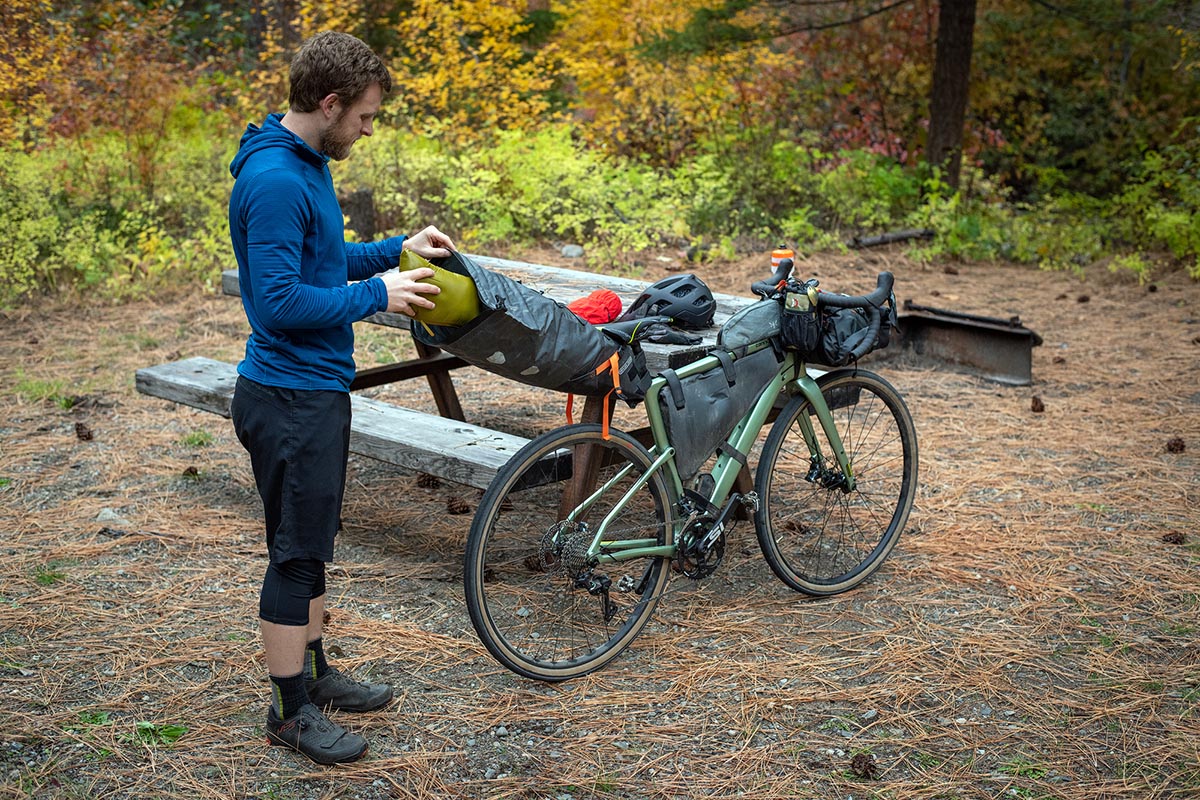
It almost goes without saying that a lighter bike will feel sprightlier and more responsive than a heavier rig on the road or path. Not only does it make the uphills more bearable, but it also allows you to cover ground more quickly with less effort. And performance benefits aside, we always welcome lifting less weight onto our rack. However, weight often correlates directly with cost: the more you spend on a bike, the less it will weigh. For example, the $1,599 Co-op Cycles ADV 2.2 tips the scales at around 23.5 pounds, while Santa Cruz’s carbon Stigmata Force 2X ($5,849) weighs just over 18 pounds. We think the sweet spot is in the 20- to 23-pound range for most riders, which will usually set you back roughly $2,000. Race-focused cyclists likely will be willing to spend up for less weight.
One of the best and least expensive upgrades you can make to your bike is upgrading to tubeless tires. The biggest benefit is the ability to run lower tire pressures, meaning the tires are better able to absorb impacts without increasing the risk of a pinch flat. This also translates to a larger contact patch with the ground, making them ideal for off-road use. Plus, eliminating tubes in favor of sealant can drop a little rotational weight from your kit.
All that said, it can be a challenge converting your bike to tubeless. While installation has become significantly easier over the last few years due to improvements in the technology, you still get the occasional tire-and-rim combination that just doesn’t want to inflate. You’ll also have to replace the sealant a couple of times per year—it has a tendency to dry and become ineffective at sealing small holes. And finally, tubeless setups can be a bit of a mess should you ever need to put a tube in your tire. If you don’t feel comfortable with the initial installation, we recommend asking your local bike shop for help.
.jpg)
In general, we prefer cross-country shoes and pedals on our gravel rigs. Why? While gravel bikes share a lot in common with road models, pavement-oriented shoes typically have smooth and flat outsoles that make walking on gravel uncomfortable and cumbersome. Alternatively, XC pedals and shoes still are lightweight yet feature a much more walkable and more comfortable outsole. For pedals, we like Shimano's clipless 520 SPD in particular—we’ve put over 5,000 miles on ours and have been very impressed. In terms of shoes, we recommend an option like Giro’s Cylinder or Shimano's XC3—they’re light, affordable, stiff enough for efficient power transfer, and still very comfortable for time spent off the bike. For a complete list of options, see our article on the best mountain bike shoes.
.jpg)
Tire Clearance
While gravel bikes bear a strong resemblance to both cyclocross and road bikes, there are a number of key differences to point out. For starters, while most modern road bikes max out at about 30-millimeter tires and cyclocross bikes at around 40 millimeters, gravel bikes typically are able to accommodate up to 700c x 45-millimeter or 650c x 50-millimeter tires (Salsa’s Warbird, for example, can accommodate both). The main advantage to these beefier tires is their ability to run lower air pressure, which results in a more forgiving ride and greater traction. What are the downsides? They’re quite a bit heavier than something in the 28c range (often found on road bikes), but significantly more comfortable and confidence-inspiring on rough roads.
.jpg)
Geometry
Another key difference between these types of bikes is their geometry, or the measurements of the frame. Cyclocross models tend to have high bottom brackets to clear race course obstacles and shorter wheelbases for easier maneuverability at slower speeds. Gravel rigs, on the other hand, tend to be lower and longer for increased stability during fast-paced descents. Compared to traditional road bikes, expect to find slacker head tube angles as well as longer wheelbases, which again translate to increased confidence and stability while exploring rough roads with bumpy descents.
Mounts
Compared to road and cyclocross bikes, gravel grinders feature significantly more mounting locations for extra water bottles, bags, and gear. In general, long gravel rides pass through far fewer service areas, meaning you’ll need to stock up on food, water, and other gear before heading out. To put this into perspective, Cannondale’s popular Synapse road bike includes two mounting locations, while their gravel-focused Topstone (our number one pick) features four. Cyclocross bikes are typically stripped of additional braze-ons for fenders or racks, both of which you’ll likely find on a gravel bike.
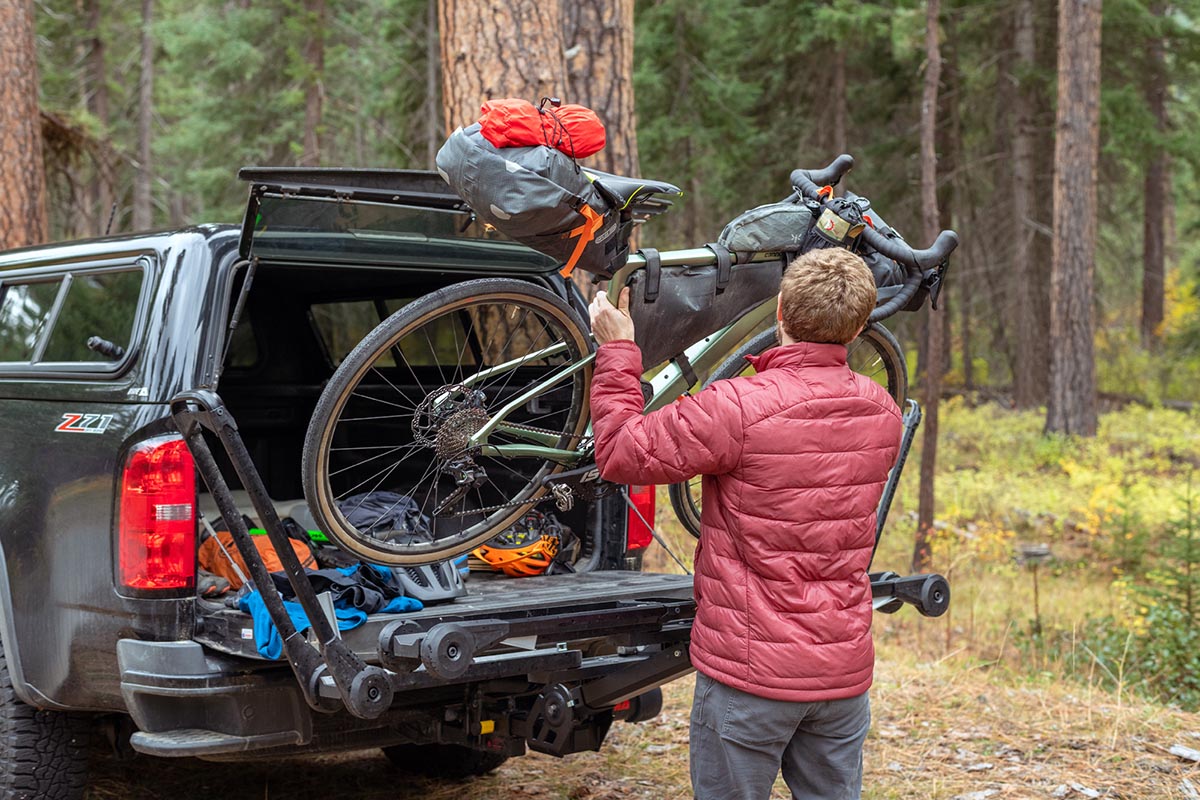
Those who already own a hardtail might be wondering: “Can’t I just ride my mountain bike on gravel roads instead of purchasing something new?” And the answer is a resounding “yes.” In fact, we actually encourage riders to use what they already have whenever possible. After all, people have been riding all sorts of bikes on dirt roads for decades—long before the advent of this niche category.
All that said, there are many benefits to purchasing a true gravel-focused bike. For example, models like Trek’s Checkpoint SL 6 are significantly lighter than mountain bikes, the drop bars offer multiple hand positions for all-day comfort, and you get more mounting locations for food, water, and gear. Gravel bikes also feature a wider gear range for the varied terrain you can expect on forest service and backroads. While a hardtail with skinny tires certainly will do the trick (we did this for quite some time), for those who plan on spending a lot of time on pavement and gravel, it’s hard to ignore the performance differences. There's good reason why this is one of the fastest-growing bike categories.
.jpg)
First and foremost, we fully encourage you to shop at your local bike shop whenever possible. There's just no replacement for a great local shop, the bike and trail advice that goes with it, and the ability to ride a certain model beforehand and easily get replacement parts and service. Having said that, buying online certainly has its benefits. It's incredibly easy to compare specs, prices, and parts online, and bike selection and shipping has improved dramatically in recent years.
There are a few key questions you should ask yourself before beginning your search. Do you know which size bike you need? Are you comfortable with some assembly? How much will shipping cost? Like shopping for the best bike helmets, it can be challenging—and especially for first-time buyers—to determine the right-sized bike from the comfort of your couch. To help, many major online retailers such as REI Co-op, Jenson USA, and Backcountry provide geometry charts and size recommendations for most of their models. Others, like Competitive Cyclist, also feature bike-fit tools that should help you determine your correct size.
.jpg)
If you choose to go the online route, most bikes shipped to your home will require some assembly. Some simply require throwing on the front wheel and pedals, but others will need an extensive amount of work before they’re ready to ride. This can include cutting the steerer tube, installing drivetrain parts, and carefully adjusting components for proper alignment. It’s also not uncommon to pay an “oversized” shipping fee. For example, Backcountry and REI often have an additional charge for shipping a bike, although REI offers a free ship-to-store option, which is a great alternative for buyers who want the added benefit of employee advice and expertise. In the end, it depends on how comfortable you are choosing, sizing, and assembling a bike.
Back to Our Top Gravel Bike Picks Back to Our Gravel Bike Comparison Table